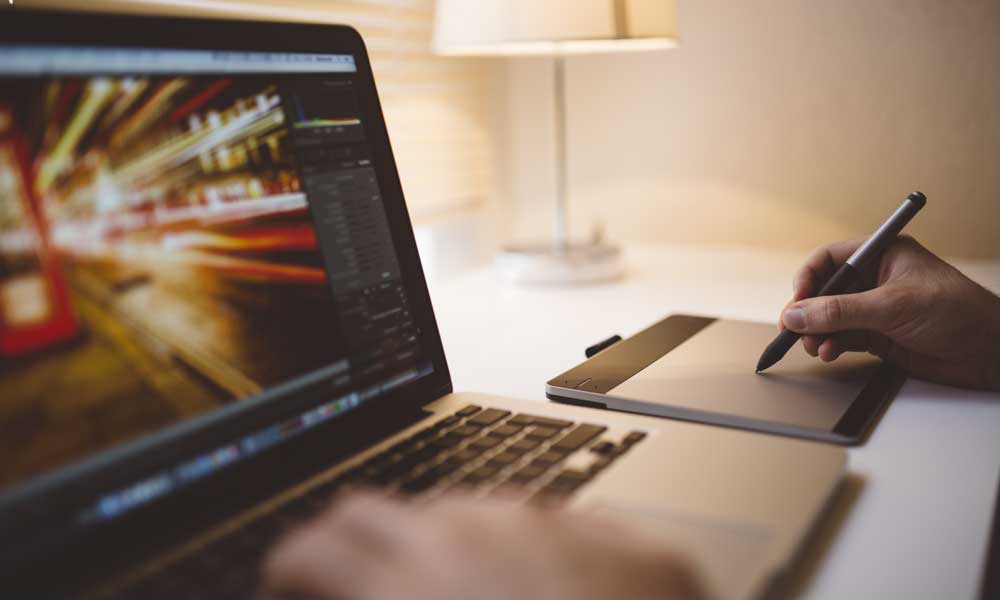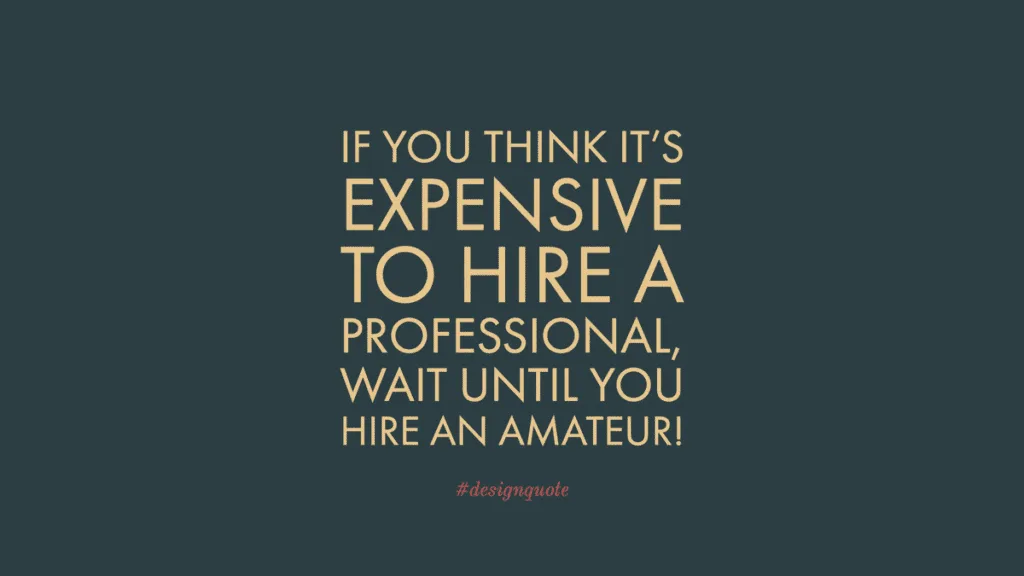How to Find the Best Graphic Designer for Your Project
Searching for a graphic designer can feel overwhelming. With so many options, how do you know which is suitable for your project? Don’t worry; we’ve got your back. We’ll walk you through the process step-by-step to help you find the best graphic designer. By the end, you’ll be ready to take on any design project confidently.
Table of Contents
Define Your Project Goals First
Before starting your design search, clearly define what you want to achieve. Outline your project's goals so you can communicate expectations to potential candidates.
Consider questions like:
- What is the purpose of this graphic design project?
- Who is the target audience?
- What style would suit the brand or message best?
- What file formats do you need the designer to provide?
- Do you need the designer to do the copywriting or provide images/icons, too?
- What is your budget for this project?
Having clear goals and expectations upfront will help streamline the process. Both you and the designers will know what you’re aiming for.
Where to Look for Graphic Designers

Once your project goals are defined, it’s time to search for designers! With so many options out there, here are the best places to look:
Freelance Websites
Websites like Fiverr, Upwork and PeoplePerHour have pools of talented freelance graphic designers. You post your project listing with requirements, and designers will apply to work on your project.
Pros: Large talent pools, easy-to-browse profiles, ability to see client reviews/ratings.
Cons: It can be time-consuming to sort through applications. Quality varies dramatically.
Creative Agencies
Full-service creative agencies will have graphic designers on staff along with other marketing talent. Working with an agency provides end-to-end support.
Pros: Get access to entire creative teams. A good option for large/complex projects.
Cons: More expensive. You pay for the overhead costs.
Individual Designers
You can search locally or online for individual graphic designers to hire. Places like LinkedIn, Twitter and design blogs/communities are great for finding talented individuals.
Pros: Direct communication and collaboration. Often more affordable than agencies.
Cons: No support teams. Likely a smaller portfolio of work.
Evaluating Designer Portfolios
A designer’s portfolio showcases their skills and style. Analysing portfolios carefully is a must! As you browse portfolios, watch for:
- Style variety – Do they show versatility across different design aesthetics? Or is it very one-note?
- Relevant work – Have they done work similar to your project type before? e.g. logo design, publication design, etc.
- Production value – Do the final designs look polished, aligned, adequately sized, etc? Pay attention to detail.
- Creativity – Do they take unique approaches to designs? Or do you see a lot of overused stock elements?
Make notes on designers that stand out positively for consideration.
Designer Interview Questions
Once you’ve identified some potential candidates through their portfolios, it’s time to interview them. Preparing standardised questions ahead of time allows you to evaluate responses fairly.
Here are some great graphic designer interview questions:
- How do you approach new design projects? Take me through your creative process.
- How do you balance being creative with meeting customer expectations?
- What graphic design skills or software do you excel at?
- What do you do to stay on top of the latest design trends?
- If we hit a creative block during this project, how would you handle it?
- How do you communicate with clients throughout a project? How often?
- Before the files are approved, could you walk me through your editing and quality assurance process?
Their responses will give you insight into their process, skills, and communication style.
Checking Designer References
After interviews, take the next step by checking their client references. Speaking to past clients gives invaluable insight you can’t gather anywhere else.
Some key questions to ask any reference are:
- How would you describe what it was like working with this designer?
- Was the designer able to produce what you had envisioned?
- How responsive were they during the project?
- Did you have any issues or delays with the designer missing deadlines?
- Would you hire this designer again for future projects?
Client references are like your crystal ball. Listen closely for any red flags to avoid headaches!
Confirming Project pricing

Before officially hiring any designer, lock down project pricing in writing. Get quotes from 3+ designers to compare.
When reviewing project quotes, watch out for:
✅ Clear deliverables – Are specific graphic design deliverables called out? e.g. two logo concepts, stationery suite, social media images?
✅ Itemized pricing – Is there detail on what is included vs. à la carte add-ons?
✅ Milestones – Does the quote break down any payment instalment milestones? e.g., 50% deposit and 50% upon completion.
Red flags 🚩like vague deliverables or pricing, can lead to invoicing issues. Nail down specifics upfront before signing any contracts.
Trust Your Gut Instinct
With so much to evaluate, this process can feel overwhelming at times. When stuck between two great designer options, trust your gut!
Consider: Who did you feel most comfortable with? Who seemed most excited by your project? Which style is most in line with your vision?
First impressions tell a lot. Don’t be afraid to go with the designer that just feels right.
Keys to Working Successfully With Your Graphic Designer

You’ve done your homework finding the perfect graphic designer. Now, you’re ready to kick off your fantastic project! Follow these tips for a beautiful collaboration:
Be Clear With Your Feedback
Clear communication is everything in graphic design projects. Give clear, direct, and kind feedback to your designer. Whether you love a draft or want to see changes, speak plainly.
Sandwich negative feedback between positive comments. For example, “I like how you brought those colourful shapes here. Can we try a few font and text placement variations to make it stand out more? I think it will pop nicely against the shapes once finalised.”
This considerate style allows creative risk-taking by the designer while still guiding the overall aesthetic.
Allow Adequate Time
Rushing the creative process breeds frustration for everyone. Discuss an ideal timeline upfront and give the designer adequate time to produce quality options for each milestone.
Build in some buffer. Talented designers get busy! So, added flexibility helps ensure you remain a priority even if other clients have last-minute requests.
Pay Deposits & Invoices Promptly
Nothing throws a wrench in a project’s momentum like delayed payments. As soon as your designer sends an invoice, process payment to keep things moving smoothly.
Verbal agreements are excellent, but always get official payment terms in writing, too. This avoids misunderstandings down the road.
Provide Detailed Feedback in One Round
Gather all feedback from critical stakeholders before providing revisions to your designer. Compiling all desired tweaks into one round saves significant back and forth.
Having to restart designs from scratch again can quickly burn out your designer. Help them conserve creative juices for iterating towards a superb result!
Bring your A-game in communication, patience, and clarity. Your designer will shine even brighter, bringing your vision to life!
Avoiding Bad Graphic Designer Experiences

You've likely found a talented graphic design partner by narrowing down options thoughtfully, checking references diligently, and communicating clearly!
But even seasoned creative directors can end up with lousy designer experiences sometimes. Here are critical red flags to watch for:
🚩 Unorganised Files – Do early drafts show sloppy alignment or fonts not appropriately embedded? This could signal more quality issues later.
🚩 Missed Deadlines – Designers overwhelmed by client work often start slipping deadlines. Have a frank conversation about workload early.
🚩 Rigidity – The best designers take feedback without taking offence. If your designer seems unwilling to implement changes or tries pushing back on too many requests, it's a warning sign!
🚩 Lack of Communication – Regular project communication is vital. If conversations start dwindling, ask if they need anything to get back on track.
If significant issues emerge, have an honest chat. Express what you expected differently upfront. This allows the designer to correct the course if possible.
But if challenges become chronic, don’t drag yourself through misery! Thank them for their efforts, pay any outstanding invoices, and move forward with finding another partner. Not every match is meant to be.
When to Outsource vs Hire In-House Designers

Expanding design needs bring a joint decision: outsource to agencies or hire in-house designers? Weighing pros vs cons helps make the best choice per your needs.
Consider Outsourcing Graphic Design When:
Variable Workloads
Freelancers expand capabilities without over-hiring. Scale up or down as needs fluctuate.
Early Stage Companies
Keep fixed costs low. Bring expert design partners in on individual projects vs salary.
Specialised Skills Needed
Access niches expert skills like 3D rendering or AR filters without needing full-time capacity.
Confidential Concepts
Non-disclosure agreements add an extra layer of protection for highly sensitive projects.
Consider Hiring In-House Design When:
Heavy Workloads
Steady influxes of design requests make having availability more reliable.
Established Companies
Keeping creative strategists on staff at a particular scale becomes more cost-effective.
Tight Integration Needed
Having designers embedded with internal teams enables seamless day-to-day collaboration.
Long Term Projects
Extended initiatives like redesigning all assets for a rebrand take continuity.
Assess each new project discussion to decide which resourcing approach serves that initiative best! Leverage both freelance connections and talented internal teams to create success.
Key Takeaways
- Clearly define project goals upfront before searching for designers.
- Vet potential designers thoroughly – review portfolios, interview, and check references.
- Communicate feedback clearly and promptly to enable designers to shine.
- Watch for red flags like missed deadlines or lack of communication.
- Carefully weigh when to outsource vs hire in-house based on specific needs.
Find the Best Graphic Designer Today
We covered much ground on finding the best graphic designer for your next project! From defining goals, researching options, vetting candidates thoroughly, asking thoughtful interview questions, checking references and seamless collaboration—you’re ready to ace this.
Remember, even the most seasoned creative leaders sometimes deal with design matches that don’t work out. Don’t get discouraged if you have to switch gears. Reflect on what you learned, and know the right partnership is out there!
Lastly, don’t underestimate the importance of clarity in communication and setting proper expectations upfront. Designers shine their brightest when aligned on vision with thoughtful feedback to guide iterations.
Now, unleash stellar creative forces upon the world! We can’t wait to see the visual magic you manifest together.
FAQs
What are typical graphic design rates?
Graphic design rates vary based on location, years of experience, project complexity and more. Some average hourly rates to expect:
Entry level designers: $25-$50
Mid-level designers: $50-$75
Senior designers: $75-$150+
How quickly should you expect initial design drafts?
Logos, banners, flyers: 5-7 business days from briefing call
Multi-page projects: 10-14 business days from briefing
Campaigns with multiple assets: 15-30 days
What graphic design skills should every designer have?
Visual hierarchy planning, typography formatting, colour theory usage, composition balancing, branding consistency, image optimisation/processing, print vs digital configuration, and proficiency across design software like Illustrator, Photoshop, Figma and InDesign.
What is the easiest way to pay international graphic designers?
Payoneer is the most popular international online payment platform for freelancers globally. It allows direct bank transfers, local currency payments, virtual cards, low fees and optimised exchange rates in over 70 currencies.
When should you ask for revisions compared to starting a design over?
Minor tweaks like adjusting text placement, resizing elements or moderate colour changes can be efficiently revised. But if you want to change the core concept, imagery or overall layout, it is often better to have the designer start afresh. Be mindful of budget, and don’t frustrate your designer with constant do-overs.
